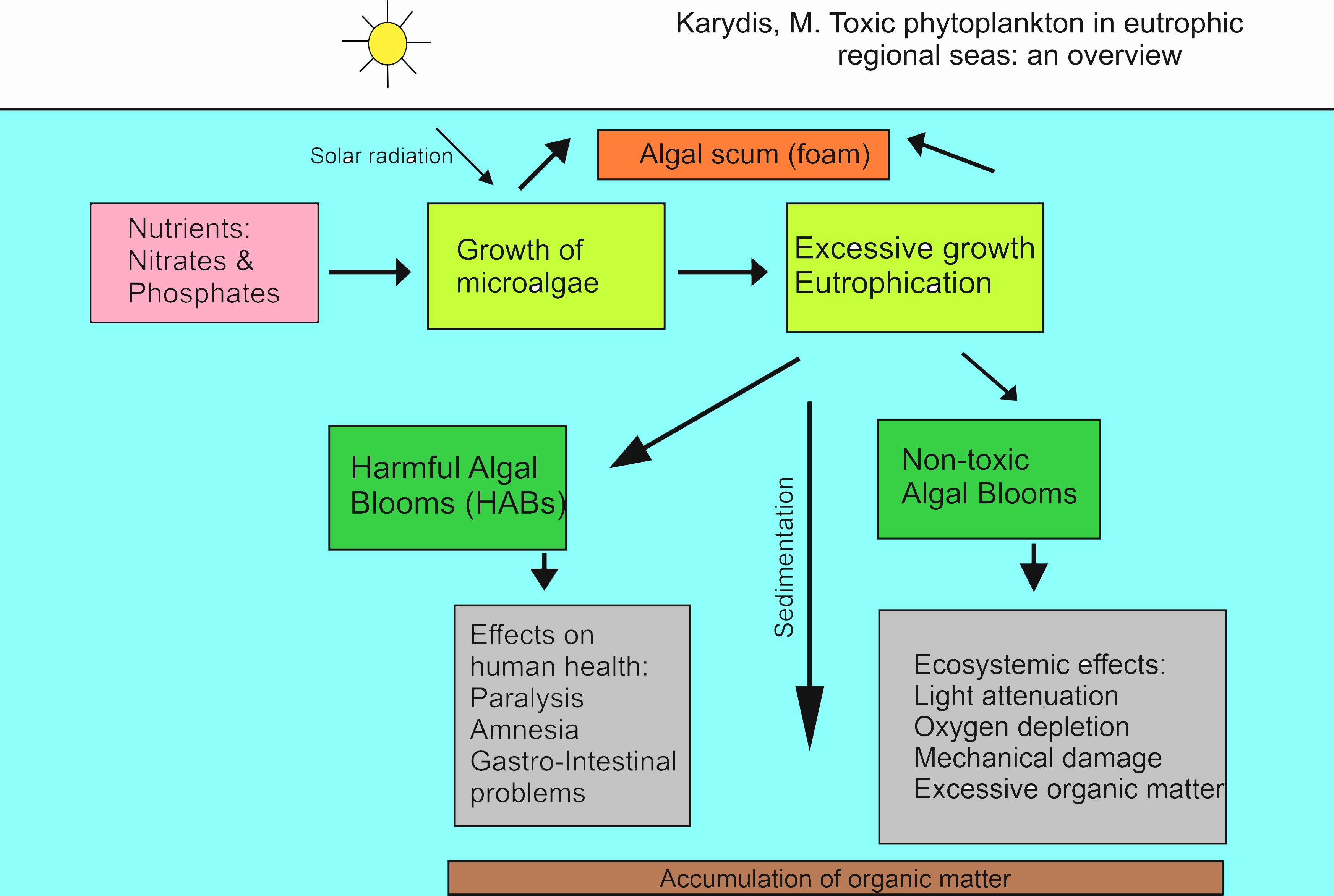
Toxic algal blooms have become a major environmental problem over the last few decades because of their impact on fisheries, leisure activities, national income and human health. It is known that Harmful Algal Blooms (HABs) can occur naturally but the frequency of occurrence as well as their geographical distribution are alarming. HABs, beyond the scientific interest, have been an issue of concern for policy makers due to the high cost for implementing management practices. Unlike other marine environmental problems, the causes of HAB formation are not known so far with certainty and a high degree of uncertainty remains, regarding possible triggering mechanisms. Various factors, apart from nutrient concentrations, seem to be connected with this phenomenon: abundance, presence and absence of phytoplankton species, presence of grazers, weather conditions, seawater temperature and water mass circulation patterns, have already been reported in the scientific literature as potential factors. However, there are strong indications that eutrophic conditions play a paramount role in HABs formation. Machine learning methods, applied over the last few years to predict HAB’s occurrences, have also confirmed the role of nutrients. In the present work, toxic algal blooms in regional seas characterized by eutrophic conditions that is the Mediterranean Sea, the Black Sea, the Baltic Sea, the North Sea, Wider Caribbean Region and the South China Sea are reviewed. Relevant issues including the drivers of eutrophication triggering HAB’s events as well as effects on ecosystem services and socio-economic consequences are also considered.
Total file downloads: 18